Model T’ers came with their cars to participate in the Parke County, Indiana tour from as far away as Arizona, Iowa, and Florida. Fifty-eight cars participated in the tour. The owners were warm, friendly, and colorful. The cars—well, they were colorful in their own special way. The T’ers clearly enjoyed getting together, talking, and showing off their pride and joy.
The Model T Covered Bridge Tour is hosted every fall by the West Central Indiana Model T’ers Chapter of the Model T Ford Club of America. Tour organizers are Brian & Valerie Jordan and Todd & Kem Johnson.
The 2020 tour started on a pleasant day in late September. The harvesting well underway, and trees were starting to show a hint of autumn color. The cars started from the Parke County fairgrounds and headed towards their first covered bridge.
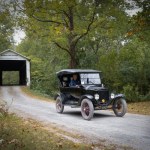
Kathy in her 1923 Model T Ford
Kathy and her husband were traveling in a 1923 Model T touring car with their two Boston Terriers. She said: “Taking these historic vehicles over the beautiful bridges of Parke County allows us to transcend time.” She wondered, “if any of these old cars had traveled these bridges, who they carried and where were they going – oh the stories they could tell us.” Many of the cars on the tour are going through their second pandemic. “They made it, and so will we.”
Each day of the five-day tour had a different route through Parke County’s numerous covered bridges. The route passed along many other interesting areas, including round barns, Amish stores, a distillery, grist mills, and a saddle shop. And of course, there were many covered bridges along the way. Rolling farm fields, native forests, and rock outcroppings added interest to the road trip. The daily instructions provided the tour participants detailed locations of filling stations, restaurants, and bathroom facilities.
When the Model T debuted in 1908, the price was $825. The price was lowered many times as production efficiency increased. The simplicity of the Model T design made maintenance simpler, faster, and more affordable. By the mid-’20s, the cost of a Model T runabout had dropped to $260. Many of these cars, which were built to last five years, are still running a century later. The Model T became the first car that working-class families could afford. In 1914 Henry Ford instituted a $5 a day wage for his workers, which more than doubled their salary. Workers could set aside a portion of their wages and could then purchase a Model T with the equivalent of four months’ wages.
The Model T was manufactured for eighteen years. Although the body style changed, the basic engine and transmission stayed the same. Ford made coupes and town cars and the pickup truck. Roadsters were called runabouts in the Model T era.
The Roadster (runabout) was an open car with a folding top, no side windows, and only a front seat.
The Coupe was a closed car with two doors, enclosed interior with front seats only, side glass windows.
The Fordor Sedan was a closed car with four doors, enclosed interior, front and rear seats, and side glass windows.
The Touring car was open with a folding top, no side windows, front and rear seats.
The Roadster Pickup was an open car with no side windows, front seat only, and rear bed for cargo.
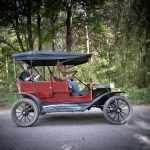
Burgundy Model T Ford
It is a common misunderstanding that all Model T’s were black. Henry Ford is quoted as saying, “Any customer can have a car painted any color that he wants so long as it is black.” When the Model T first came out, a customer could choose between blue, gray, green, red. The first black Model T didn’t roll off the assembly line until five years later. Each color required a different painting station, so it was more economical to produce only black Model Ts. Black paint was cheap and durable, so it was more efficient to manufacture only one car color. So, there was a decade of monochromatic Model T’s. The sales of the Model T started to decline towards the end of its life. Henry Ford was told: “You’ve got to do something because you’re going to go out of business.” Adding colors was a way of increasing sales. In the last several years of production, six new colors were introduced from Royal Maroon to Phoenix Brown to Highland Green.
Many of the Model T’s at the Parke County tour were the typical black, but there were also gray, blue, green, and maroon. Some of the early models had brass fittings. The brass was discontinued when World War I broke out, and the military needed the brass.
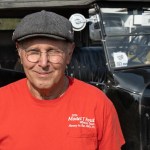
Ron Bolser with his 1925 Touring Car
Ron Bolser from central Illinois is one of the 2020 tour participants. As an enthusiastic owner, Ron belongs to the West Central Indiana club. Ron’s 1925 touring car was built in 1924 one day after the 10 millionth car rolled off the Ford assembly line. By the time Ford made its 10 millionth car, half of all cars in the world were Fords. Ron paid about $8,000 for his Model T, which was in turnkey condition. He has only had to make minor changes, like adding a transmission filter. “These cars are lots of fun—I don’t know how many thousands and thousands of miles we’ve driven over the years.”
The Model T is a simple car to work on, according to Ron. “Everyone here can work on their own cars.” It is a four-cylinder car with a simple carburetor. A person who has a frame and an engine block can purchase all of the other parts remanufactured. Owners can make their own repairs because of the simplicity of the Model T.
Greg, another participant, said the Model T gas tanks are only 10 gallons. The cars get 15 or 16 miles a gallon. The fuel is gravity fed. If a fuel level in the tank was less than a quarter, the car could stall on a steep hill. The engine could be starved for fuel and shut down. Greg pointed out that some Model T cars had a set of three accessory metal cans attached to the running board. The red container was for gasoline. The smaller blue can was for oil. The white container was for water.
The car has one elliptical spring going horizontally across the front and another on the rear axle. There are no shock absorbers. Having only two springs helped to keep the Model T affordable. Many of the roads in Park County are gravel and sometimes like washboards. Sitting on the hard seats of the Model T makes for a bumpy ride. With just one front and rear spring, the car can twist to fit the road. Many of the roads had deep ruts. “It has a high axel, so it is almost, but not quite because of the drive system, an off-road vehicle.”
The Model T does not have a radio. Even if it did, the motor purrs so loudly that the driver wouldn’t be able to hear it. Parke County is amazingly scenic, and the open cars let one feel close to nature. This picturesque countryside is entertainment enough.

Contrast of bright and dark
Photographing the Model T tour had its challenges. Our eyes are much better at adjusting to a dark and bright area (dynamic range) than film or digital cameras. When there is a wide variation in light, the white areas of an image are washed out, and darker areas lose all detail and disappear into black. It takes some skill to properly expose both the black Model Ts and the bright sky. The wooden beams inside the covered bridges were dark in comparison to the bright daylight. I did my best to compensate and balance the bright areas of the image.
I tried to arrive at the covered bridges before the cars to photograph them as they crossed. Since one never knows what stops were made along the way, I sometimes had a long wait for the cars to arrive. Other times I hardly had enough time to get in position and focus the camera. I made an effort to photograph some cars entering and other cars leaving the covered bridge. This always put me at the back of the pack. Sometimes I was able to take shortcuts to reach the next covered bridge before the cars arrived. Other times, I would skip one of the stops so I could jump ahead of them again. I was only able to photograph two of the tour’s five days. I would have liked to have had more time to converse with the owners. When there is another tour, I will plan to stay overnight in the area to make this possible.
I thoroughly enjoyed watching and photographing the iconic Model T’s traveling through the beautiful countryside and crossing the picturesque covered bridges of Parke County. It was fascinating to converse with the owners and to hear their stories. I am surprised others didn’t take this opportunity to see a significant part of Americana. You may want to mark your calendar now to observe next year’s Model T covered bridge tour of Parke County.

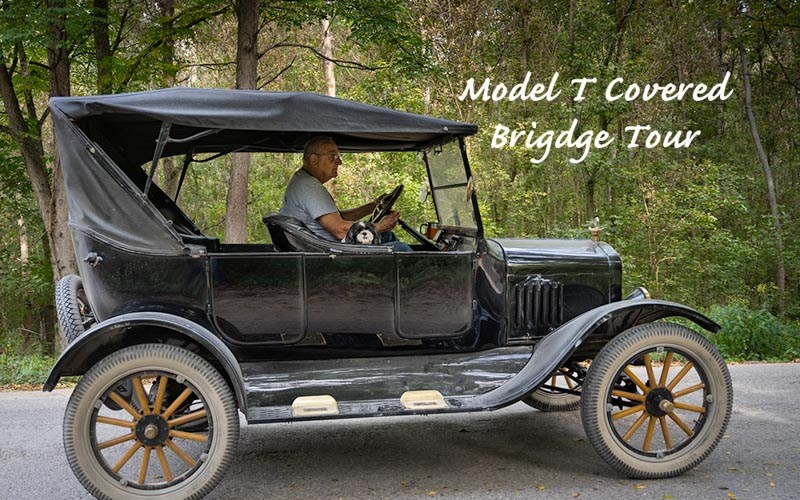
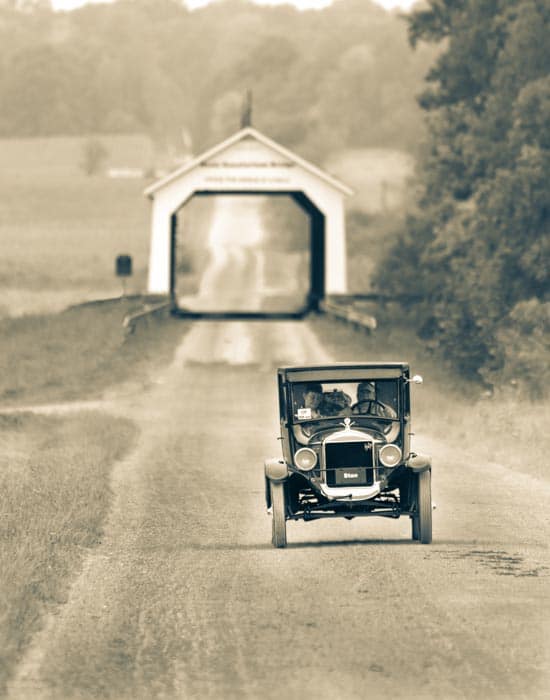
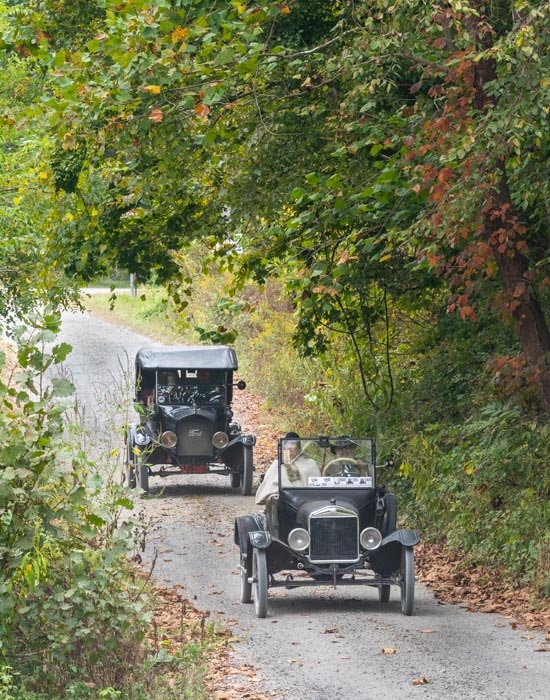
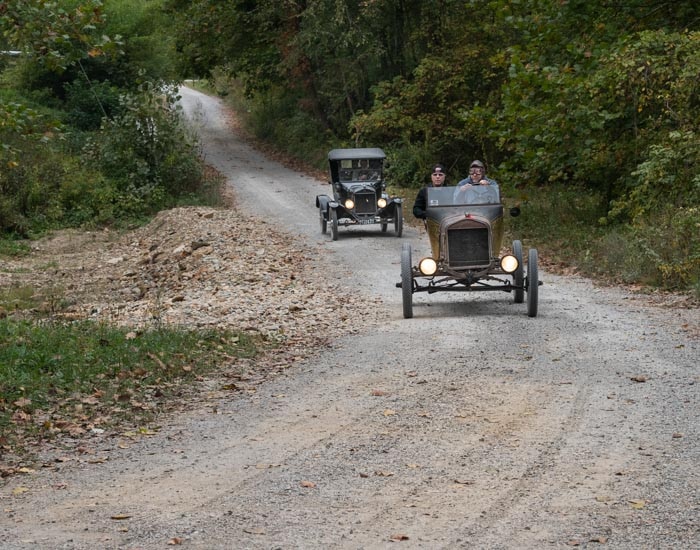
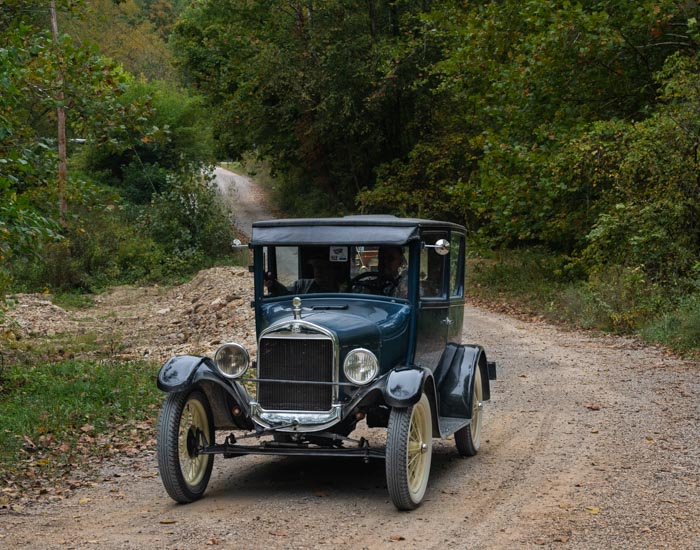
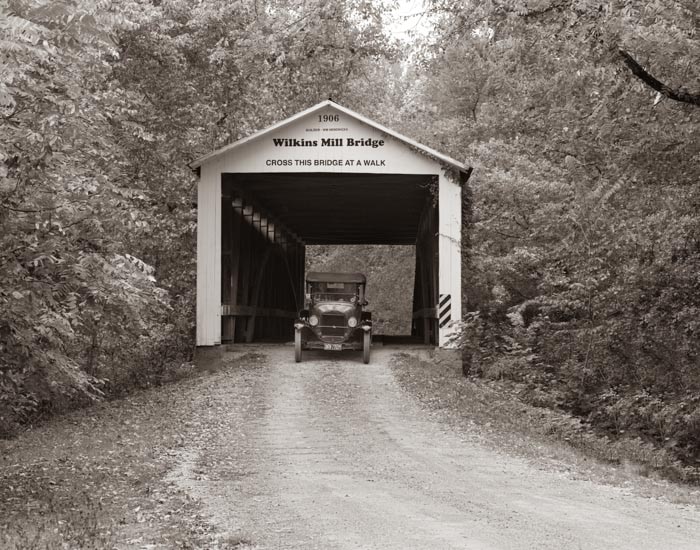
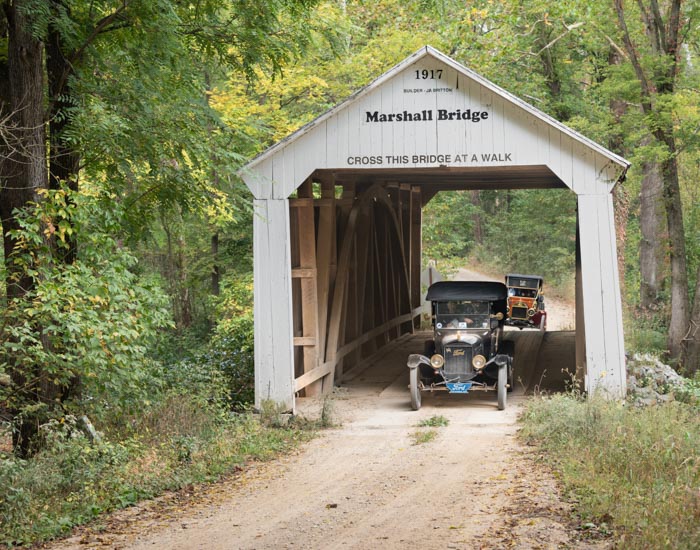
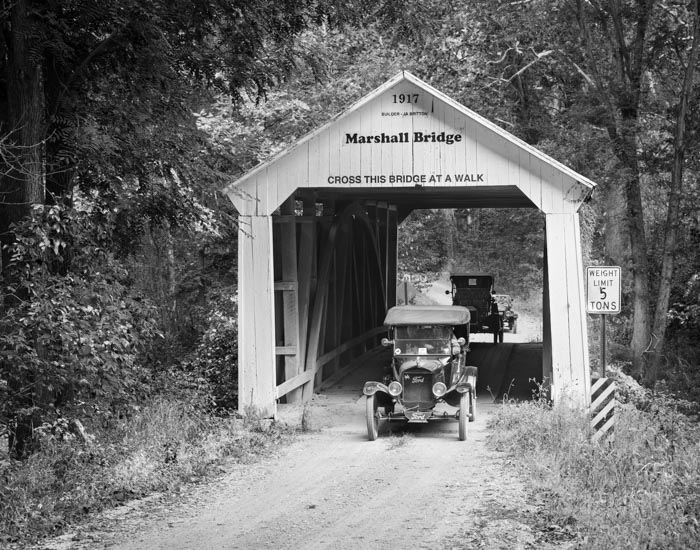
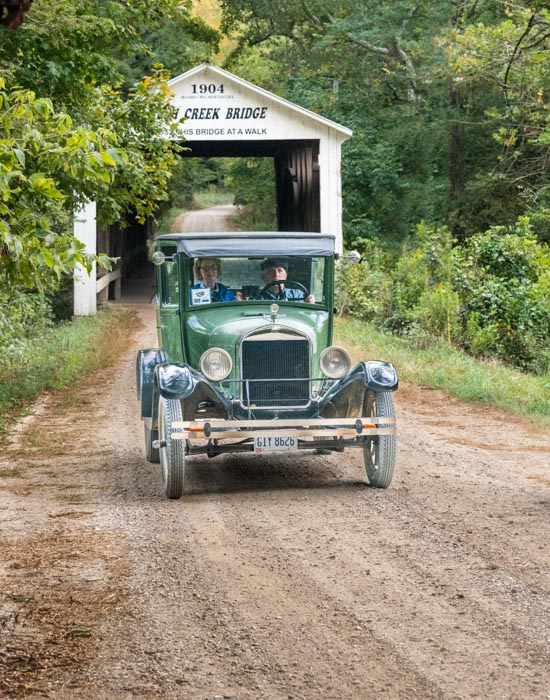
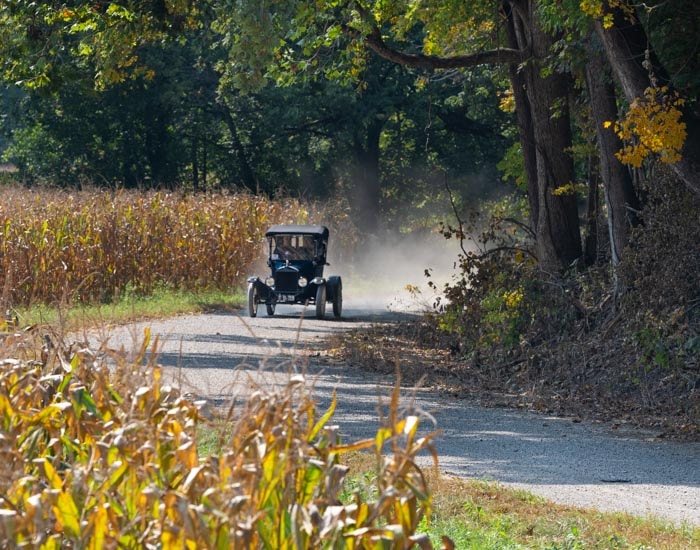
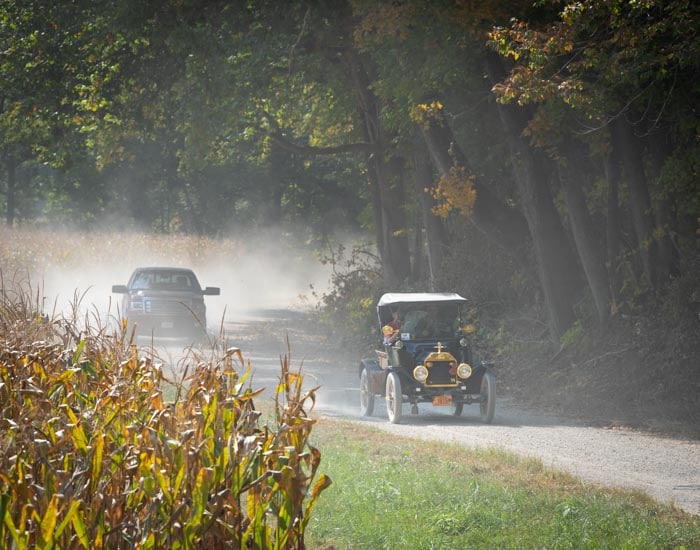
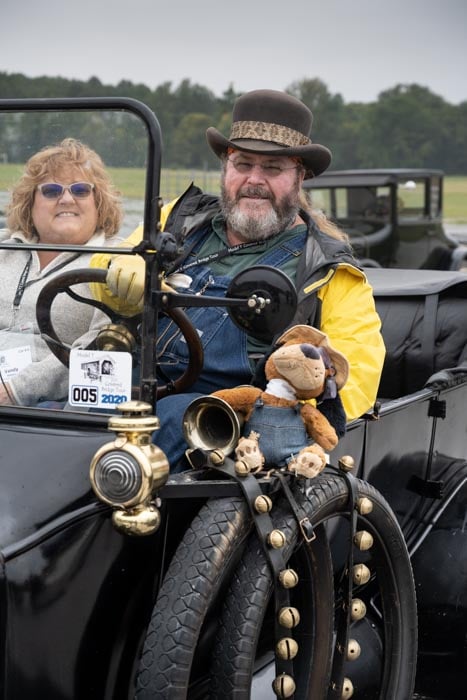
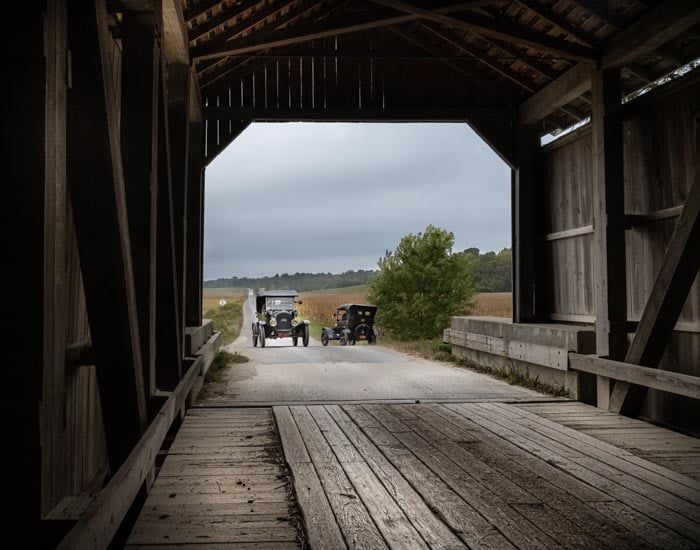
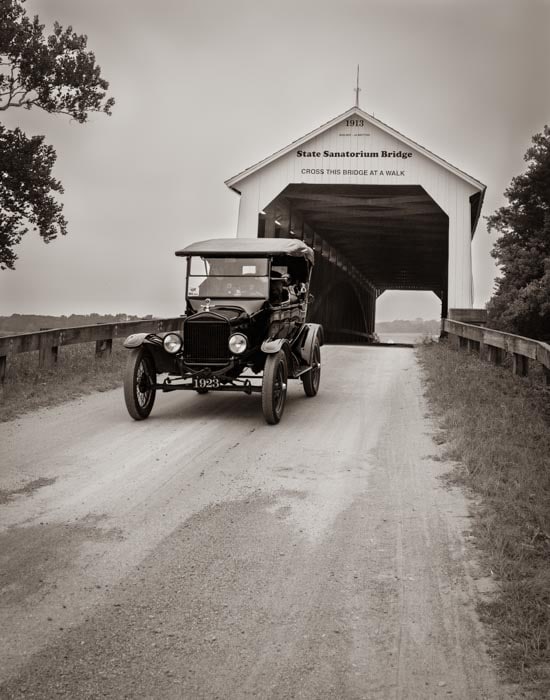
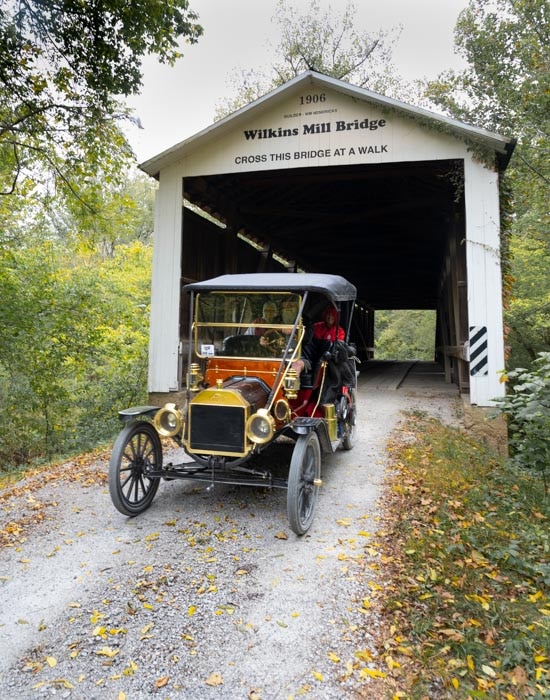
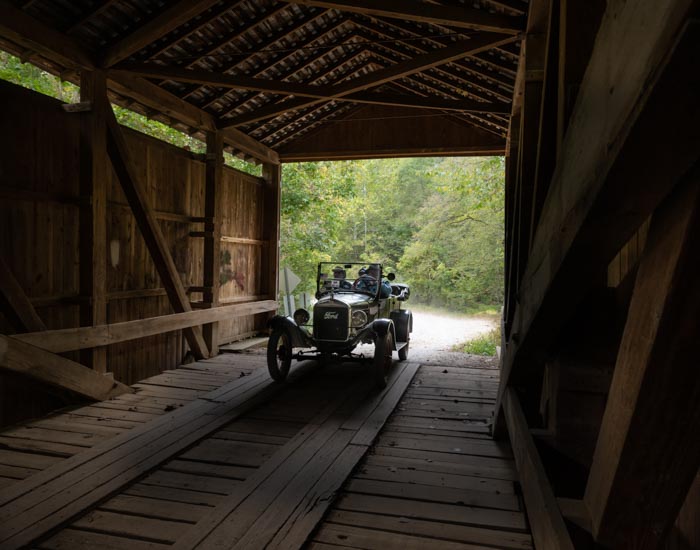
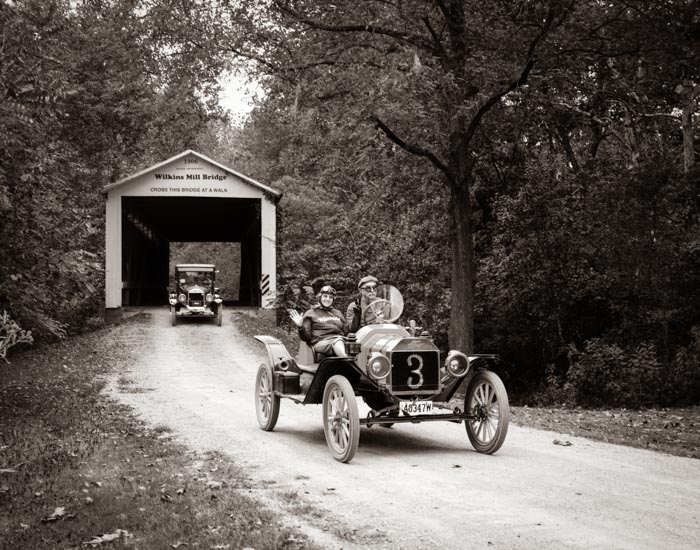
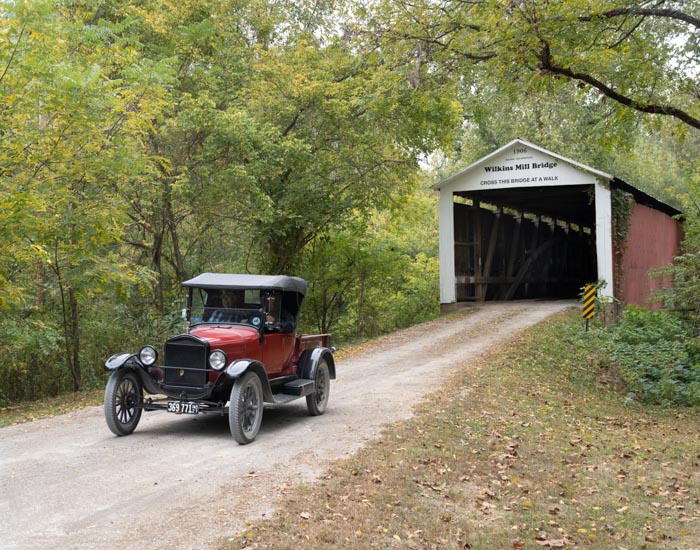
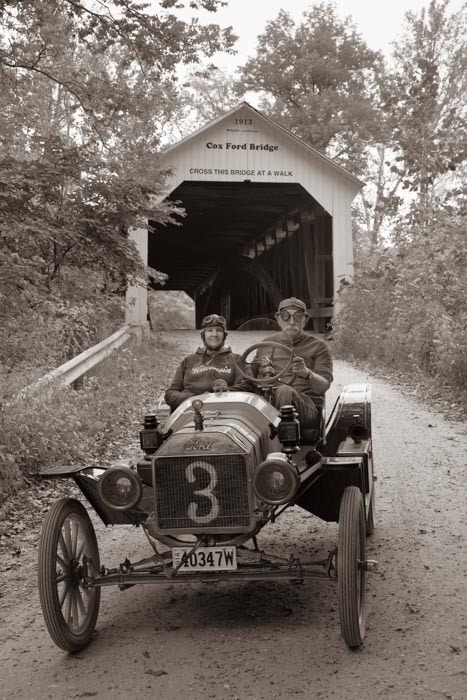
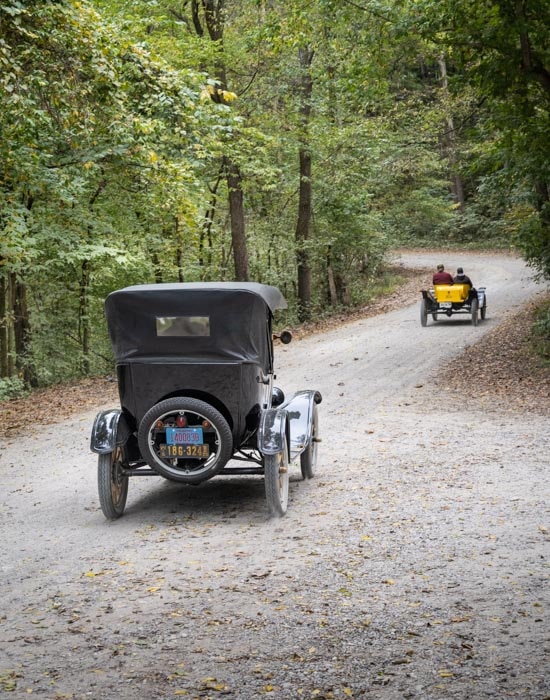

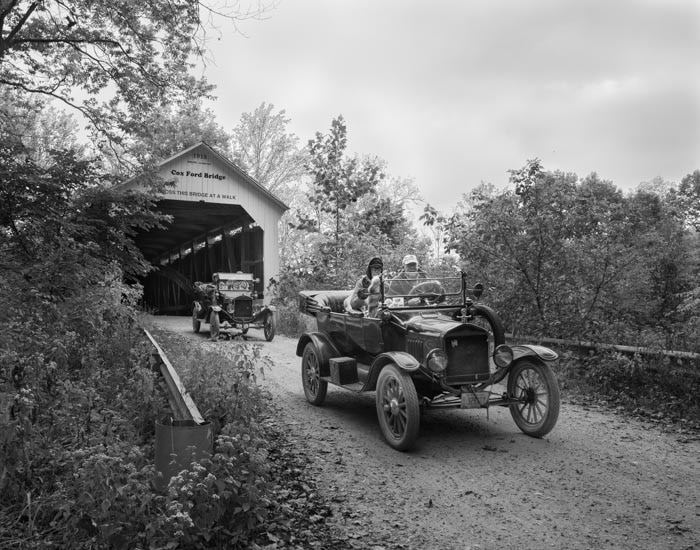
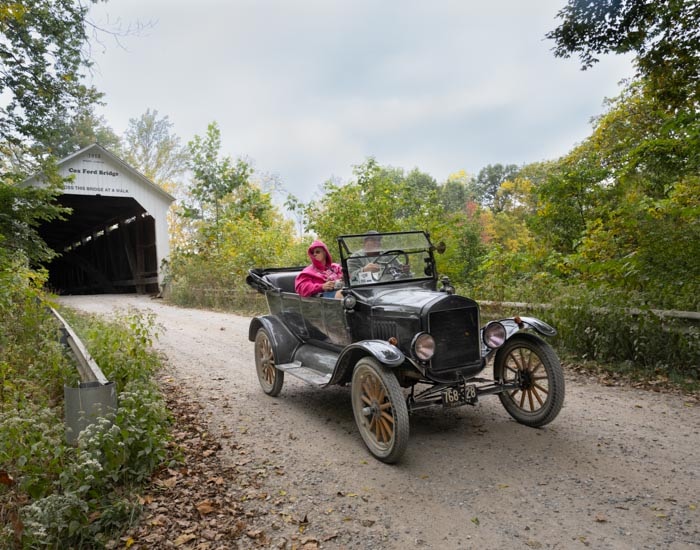
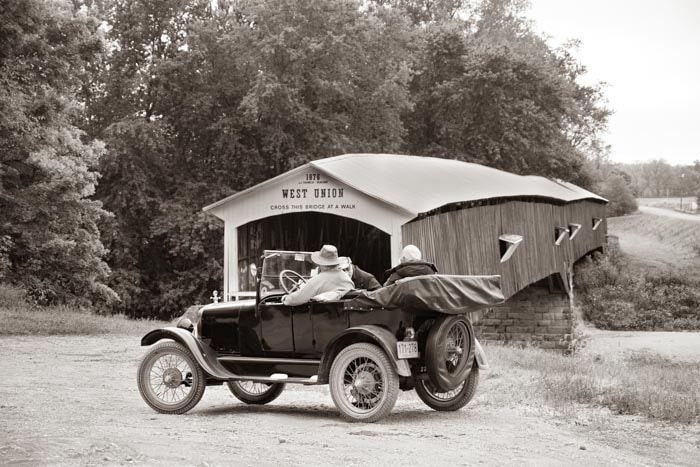
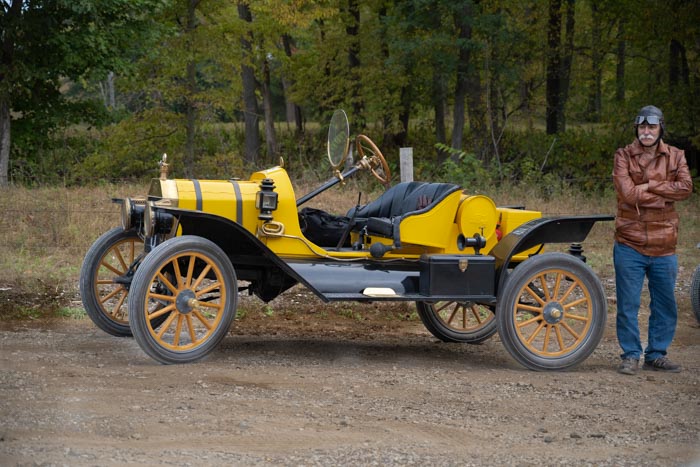

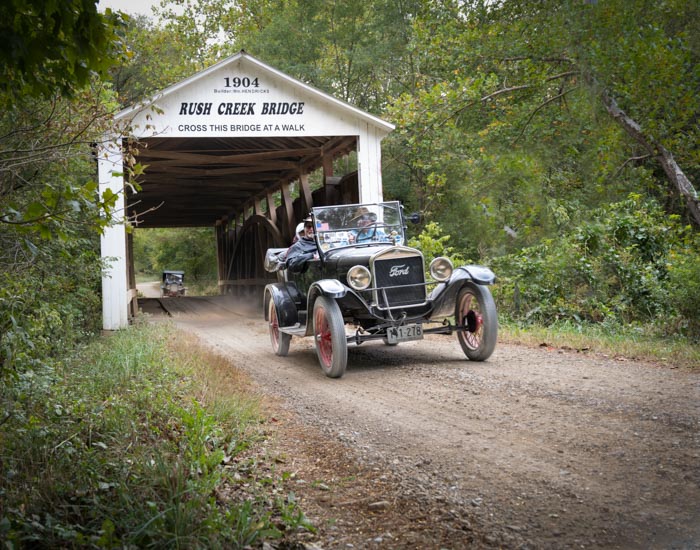
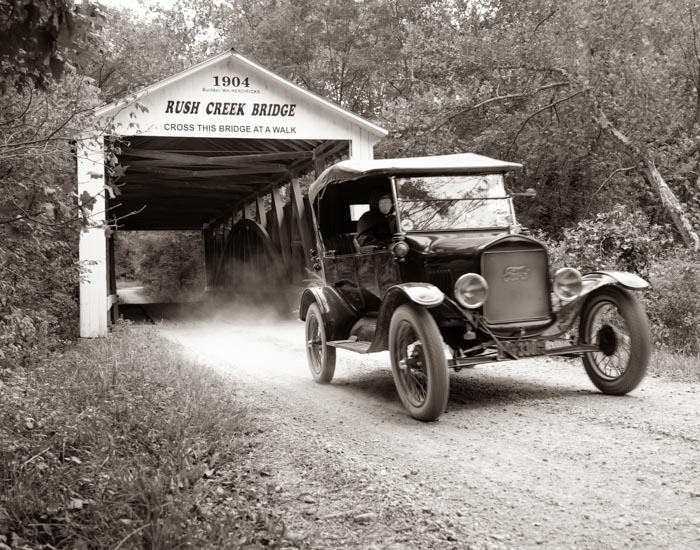

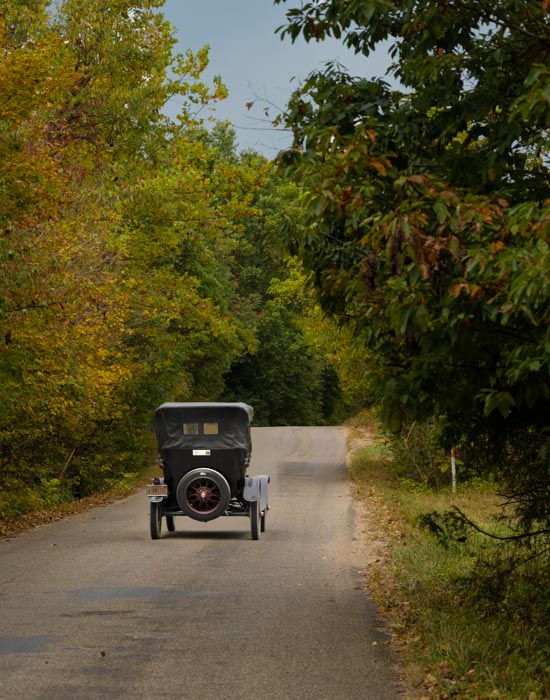
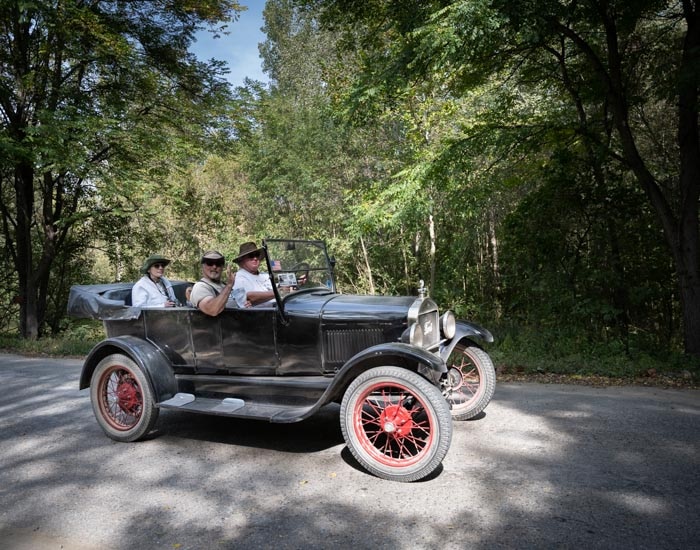
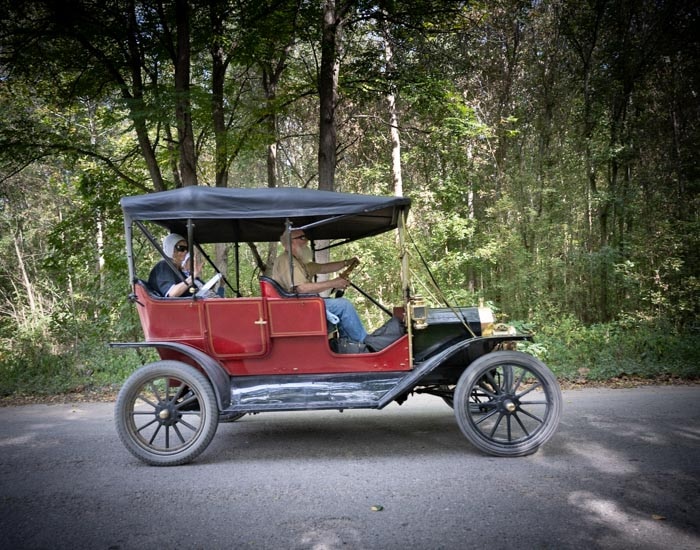
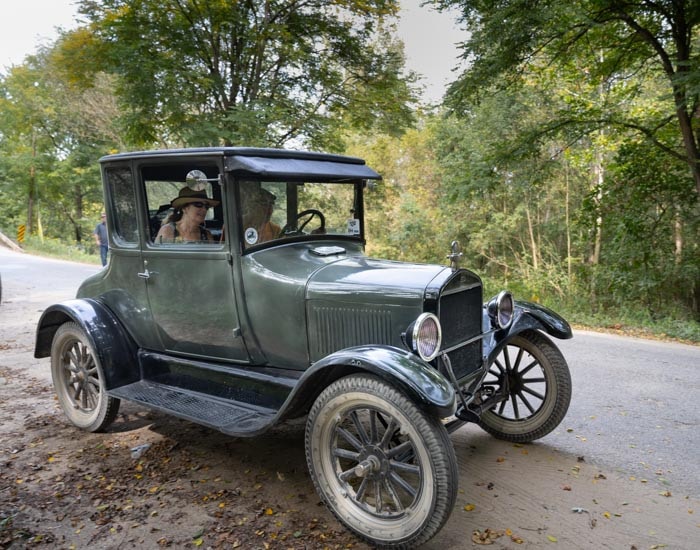
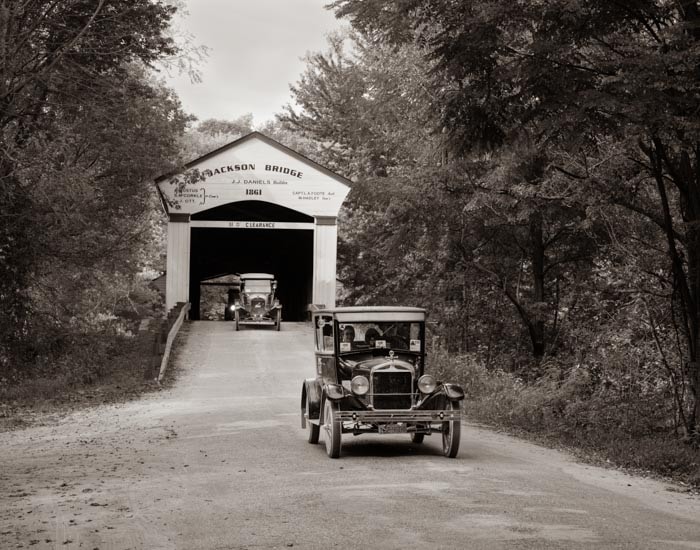
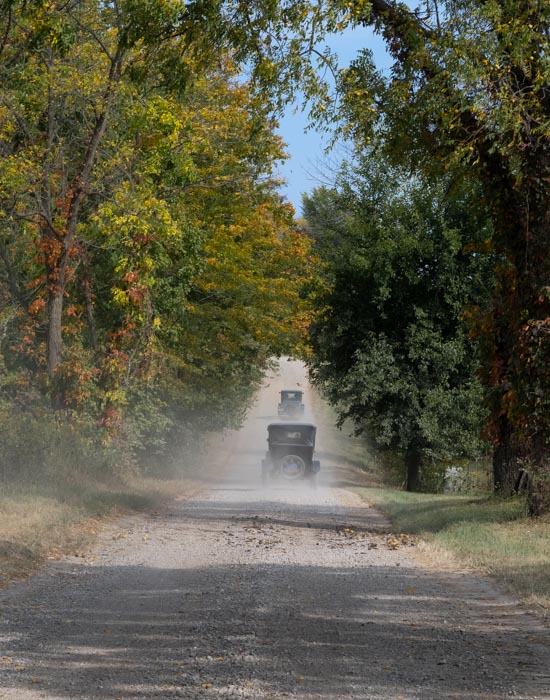
0 Comments